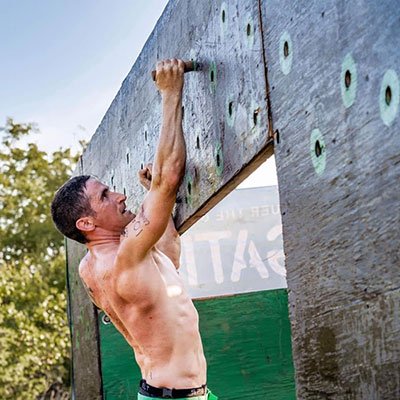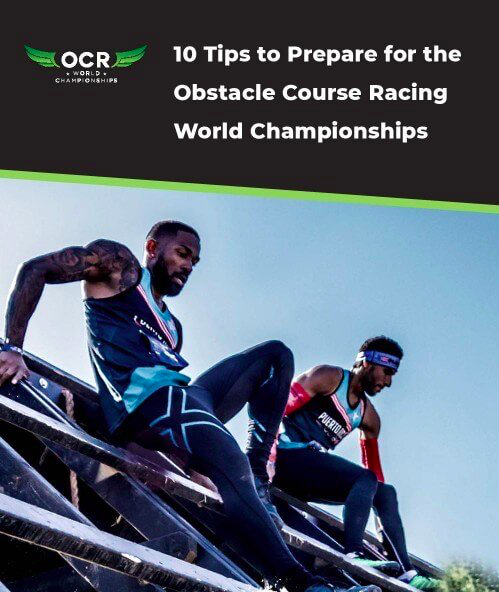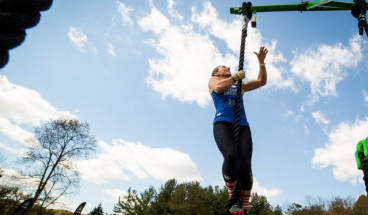
How to Train for the OCRWC: Traverse Obstacles
Indian Mud Run’s Floating Walls have been at several of Adventurey championship events making appearances at United States Obstacle Course Racing Championships (USOCRC), North American OCR Championships (NORAM) and OCR World Championships (OCRWC). With its massive structure and gain in elevation as you complete the obstacle, it is often a racer favorite located near the finish line.
While the obstacle itself is giant, the technique and training for floating walls and Z Man (Adventurey’s wall traverse) are not much different. They both involve moving sideways using both your hands and feet with small foot and fingertip holds.
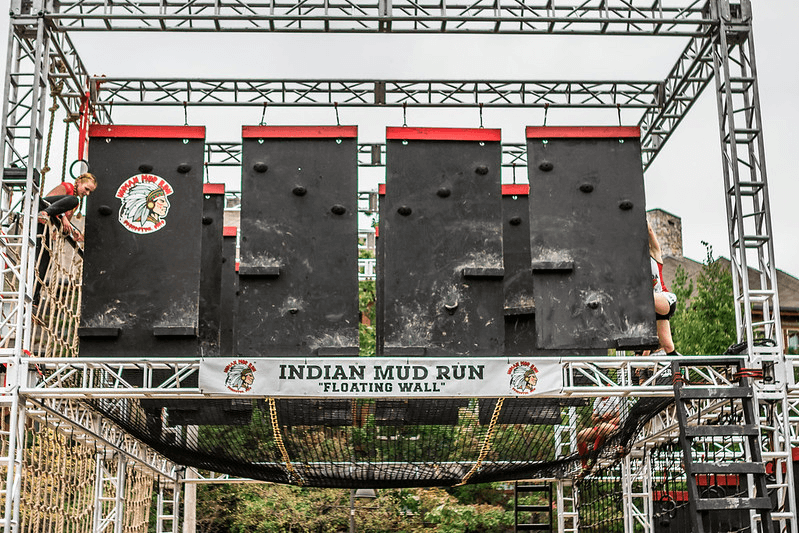
1. Mimic the Hand Position
Both the Indian Mud Run’s Floating Walls and the Z Man use a hand position that consists mostly of the first two digits of your fingers. To strengthen that hand position, you want to practice it in your training via both fingertips only. This can be through pull-ups via a climbing hang board or just a squared off piece of gym equipment (i.e. top of a squat rack).
2. Practice the Movement
The movement for both obstacles is sideways. There is a balance between efficiency and reach. The longer movements you take the less movements you have to make, however, you may find that over extending yourself makes it harder. Everyone is different so ideally you can practice on a traverse wall or floating walls ahead of time. After running a Spartan Race or Indian Mud Run, head back out on the course and do a couple of practice runs of the obstacle. If you have the space, it is pretty easy to construct your own traverse wall by screwing pieces of 2×4 inch blocks of wood into a wall.
If you want to make it harder, and therefore progressive, you can use smaller blocks of wood, hockey pucks or small climbing holds. If you want to make it easier because you are still improving your proficiency use larger holds or larger blocks of wood. If you don’t have access to a ninja gym or the ability to construct your own obstacles, heading to a rock climbing gym would be useful. Instead of going up, try bouldering by moving sideways across the base of the wall.
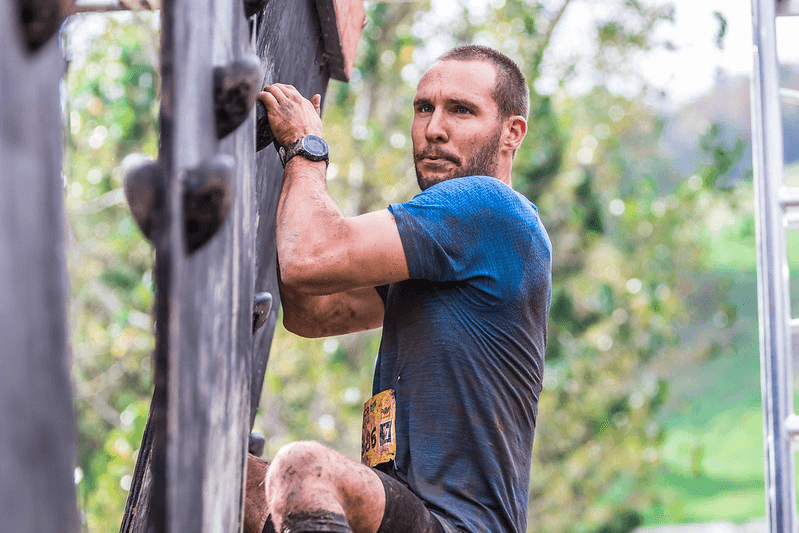
3. On Race Day, Choose Your Lane Wisely
If you are strong on obstacles and don’t have a problem, you can just take whatever is the closest lane and be fine. If Z Man or Floating Walls gives you trouble though, you may want to choose more carefully. Most people will naturally drift towards the shortest route possible or whatever line they happen to be running towards based off the way the terrain brings you to the obstacle. This means the lanes that are away from the natural line of drift may have less mud and sweat on them making them easier. Try to choose that lane for Z Man or Floating Walls if it is a great point of concern. If it is a sunny day, you may want to go towards a lane that is in the sun and will therefore more likely to be nice and dry.
There is an exception for Floating Walls though. While you are not allowed to overtly receive help from other athletes on the course (as outlined in the rule book), this is one obstacle that other athletes can inadvertently help each other. When there is another athlete on the opposite side of the floating board it hangs much straighter up and down as opposed to swinging away from your body. If you match movements with another athlete who is on the opposing lane (opposite side of the board you are holding), this obstacle will become significantly easier. This is especially useful if you are now in the retry lane. Work smarter, not harder.
For those completing the Z Man, you have a lane choice of inner or outer lanes. It is a lot easier to rest at the inner part of the Z then it is to rest at the outer part. So if you know you need to rest mid-obstacle, choose a lane where the inner part of the Z is the second turn rather than the first. This allows for a quick break 2/3 of the way through the obstacle instead of at the first third.
4. Efficiency, Not Every Hold
The course designers purposely put lots of holds on Z Man ensuring that all athletes will have a spot they can grab. The same thing goes for Floating Walls, which has three hand holds per board. Only use what you need to in order to get across the obstacle, which means feel free to skip some holds. As discussed in the “Practice the Movement” section, your experience doing similar moves in practice will allow you to better judge what you need to use and what you can bypass.
For example, on Indian Mud Run’s Floating Walls, I use only the first and third hold on each board. Despite being five foot, six inches, I feel comfortable bypassing the 2nd hand hold and the 2nd foot hold. This essentially reduces the number of movements I need to make by 1/3 saving energy on this obstacle so I can save it for future challenges.
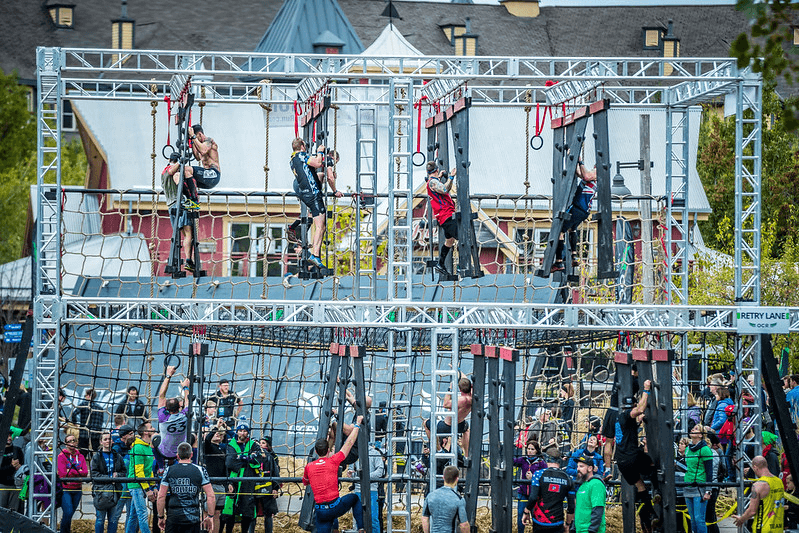
5. Use Your Center of Mass
With both of these sideways traverse obstacles you want your hips close to the board. It is also easier if your hands are higher above you rather than closer to your face. When your hands are higher up it means you are hanging (something we practice a lot of in OCR). If your hands are by your face you are essentially doing a pinch grip/static row while your body weight tries to pull you off the wall. Hanging from your hands is easier (if you don’t believe me try doing a pinch grip on wide barbell plates equal to your body weight vs. simply hanging from your hands). Reach high, hang and keep that center of mass (your hips) close to the wall.
There is one aspect of the Floating Walls I didn’t cover and that is the height. Unlike Z Man, Indian Mud Run’s Floating Walls has you elevated high above the ground. I didn’t talk about it because it is all in your mind. If you are uncomfortable with the height it is because you are not confident in your ability or you are scared of heights. Confidence is built by repetition, which I already covered above. If you are scared of heights that is something you are going to have to work on separately. All the obstacles at OCRWC are very safe, there is nothing to worry about and therefore no reason to be scared.
Practice, rest and repeat. The pattern is simple and repetition will build the strength you need for success. Looking forward to seeing everyone in Vermont…why isn’t it race weekend yet?
Want more great training tips? Look throughout the OCRWC Blog page for more articles in the “How to Train for the OCRWC” series and pick up a copy of Evan “Ultra-OCR Man” Perperis’ newest training book “The New Strength & Speed’s Guide to Elite Obstacle Course Racing” or if you are more ultra-focused like Evan is “Mud Run Guide’s Ultra-OCR Bible”.
